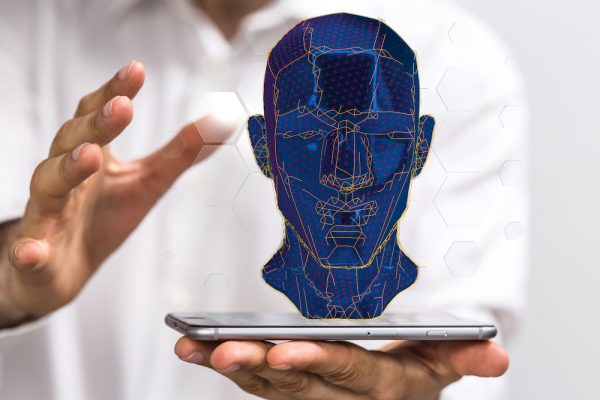Smartphones already run much of our lives, don’t they? From morning alarms to late-night scrolling, these devices are indispensable. But imagine this: by 2030, your phone might not just respond to your taps and swipes—it could think with you, anticipate your needs, and act as a full-fledged digital companion. The idea sounds like science fiction, but the pieces are slowly falling into place.

Where We Stand: Smartphones & On-Device AI
Right now, smartphones are getting smarter. Way smarter. “Edge AI” or on-device intelligence is already here. Gartner predicts that by 2025, users will spend nearly $300 billion on smartphones equipped with AI capable of running small language models offline. That means your phone could handle tasks locally—no constant cloud connection needed.
Google and other tech giants are testing apps that let advanced AI models operate entirely offline. Imagine asking your device to summarize a report, create a video edit, or even generate a personal fitness plan—all without sending your data to the cloud. That’s not just convenience; it’s a subtle, profound shift in how we interact with technology.
Why Full AI Hubs Make Sense
Several factors push us toward immersive AI smartphones:
-
- Hardware leaps: New processors with neural engines can crunch AI tasks right in your pocket. It’s astonishing how far chip tech has come.
-
- Speed and convenience: Nobody likes waiting. On-device AI means instant results, without lag or lost connections.
-
- Privacy matters: The less data leaves your phone, the safer it stays. A more private, personal assistant could be a reality.
-
- Multimodal magic: Combining text, voice, camera, and sensors—phones are perfect platforms for AI that can see, hear, and interact with your world.
Put together, these trends point to a future where your smartphone isn’t just smart—it’s intelligent. It could anticipate your moves, help you create, even manage your life in ways we can barely imagine today.
What a “Fully Immersive AI Hub” Might Look Like
By 2030, here’s how your phone could behave:
-
- Context-aware companion: Knows your schedule, habits, and mood, and makes suggestions before you even ask.
-
- Creative powerhouse: Imagine telling your phone, “Make a highlight reel of my trip,” and it produces it—clips, music, captions, all polished and ready.
-
- Central hub: Controls your smart home, car, wearable tech, even AR/VR devices, all seamlessly.
-
- Multimodal interaction: Speak, gesture, point, or scan—your phone understands it all.
-
- Offline independence: No Wi-Fi? No problem. Your AI companion still works for you.
-
- Immersive experiences: AR, foldable screens, maybe even holograms—your phone could be a portal to new worlds.
It sounds thrilling. But it’s not without challenges.
The Roadblocks Ahead
Making this dream a reality by 2030 isn’t trivial:
-
- Hardware and battery limits: Running complex AI locally drains energy. Balancing performance with battery life is tricky.
-
- Big models, small phones: Large AI models don’t naturally fit in pocket-sized devices. Compressing them without losing performance is a tall order.
-
- Heat and design: Powerful processing creates heat. Designing slim, sleek phones that don’t overheat? A tough nut to crack.
-
- Ecosystem integration: Your AI hub only works if apps, devices, and services play nicely together. Fragmentation is a real risk.
-
- Trust and ethics: Users need to feel safe giving AI more control. Misuse, bias, and privacy issues loom large.

Is 2030 Realistic?
Can we actually see immersive AI hubs in our hands by 2030? Likely, but not everywhere or for everyone.
-
- By 2025: Early adopters and flagship phones already show AI features running offline.
-
- By 2027–2028: Mainstream devices may have the processing power for more ambitious AI tasks. Foldables, AR, multimodal sensors—all getting refined.
-
- By 2030: Many users could experience phones as fully intelligent companions, though global adoption might still lag in some regions.
So yes, the future is coming. But it may feel gradual, almost like magic sneaking into our pockets, one feature at a time.
Why This Matters
-
- For users: Phones won’t just respond—they’ll anticipate. Your device could help manage your day, spark creativity, or make life just a little easier.
-
- For creators: Mobile workflows could shift completely to handheld AI powerhouses. Desktop workstations? Maybe less necessary.
-
- For privacy & security: On-device intelligence can be safer—but also introduces new risks. How much control do you hand over?
-
- For tech companies: Whoever controls the AI hub controls the ecosystem. It’s a high-stakes battle for the future of mobile intelligence.

Final Thoughts
So, will smartphones become fully immersive AI hubs by 2030? Likely—but in waves, with some users leading the charge and others catching up later. The path forward is exciting, a little daunting, and full of promise.
Your next phone might not just be smart. It might understand you, anticipate your moves, and transform how you live, work, and play. And that’s a leap worth watching—because soon, your pocket might just hold a tiny, personal universe of AI.
For insights on AI trading, continue reading